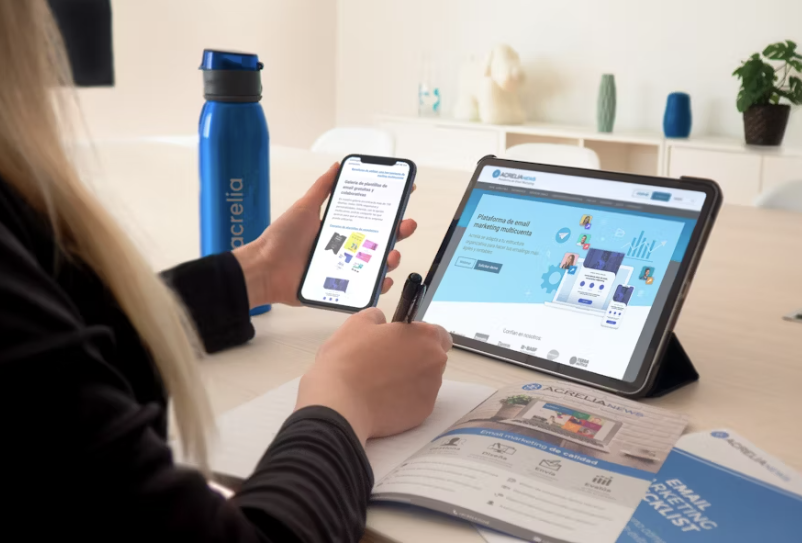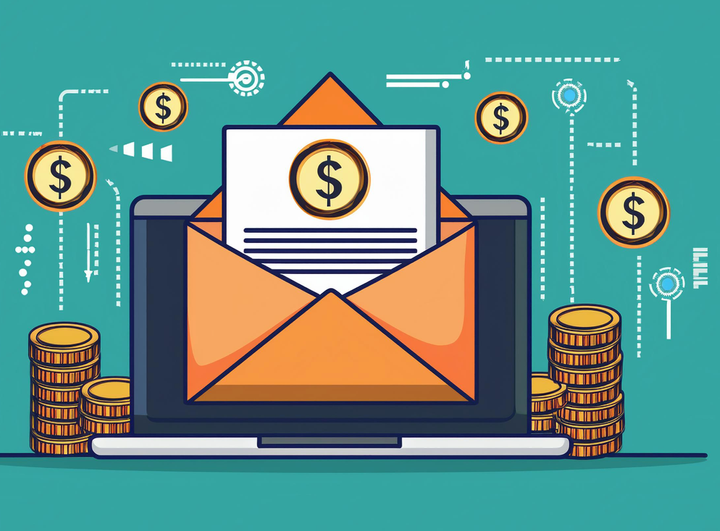How Email Marketing Metrics Influence SEO
Reading into your Email marketing metrics can help increase rankings in search engines. Learn about the important metrics that influence SEO.

Email marketing is a powerful digital marketing strategy to nurture leads. While SEO increases brand visibility through organic rankings.
Imagine the potential if these two strategies were combined. Email marketing metrics for SEO are a step forward to take control of your marketing strategy.
That said, the process isn't always linear. Integrating email and SEO is important, but without compromising on content quality.
This article will explain the basics of SEO, including key tips to combine both marketing strategies
SEO Basics: What is it and How Does it Work?
SEO is the practice of using quality content, on-page and off-page strategies, and technical optimization to improve website ranking in SERP. Search engines focus on search intent, content quality, and user experience, among other factors, to rank your site.
There's a higher chance your brand will appear at the top of the results page if you address user queries directly. In addition, you must provide quality content and industry relevance.
The audience engagement data and SEO metrics can act as a base to build site authority. But experts don't stop with implementing SEO basics alone; they find a way to integrate performance data with the technical aspects of SEO.
Using the Right Keywords and Content
Your website content is one of the key factors that determines ranking. Followed by it is the keyword usage. Identify the right keywords by choosing terms relevant to your business. In addition, focus on the search volume, intent, and competition.
Using proper keywords shows credibility, helping you rank better in search results.
Integrating Backlinks From Authoritative Sources
A backlink is a hyperlink from another website to yours. When users find your links on authoritative sites, it increases brand trust.
Building good backlinks takes time, but you can always reach out to content creators in your space. Alternatively, you could partner with sites like Forbes or join online communities like Warrior Forum.
Technical Optimization and an Intuitive Page Experience
Google's core ranking systems use a variety of signals to determine your page experience. One of the strongest aspects is the Web Core Vitals, which enables a cohesive page experience. This means your website must be simple to navigate, even for non-technical people.
Measuring Results
Every factor mentioned above works together, but Google's complex algorithm changes can make this process difficult to navigate. To measure the results of your SEO efforts and track their dynamics over time, SEO specialists use specialized tools, like the Keyword Rank Tracker by SE Ranking. With its help, you can track rankings for specific keywords, research AI visibility, and identify ranking issues like traffic drops or keyword cannibalization.
The Connection Between Email Marketing and SEO Metrics
The target audiences in email marketing and SEO are at different points in the customer journey. This can make it seem like a detached marketing model. But, in reality, relying on email marketing metrics for content optimization can have a positive impact on SEO.
After all, both email marketers and SEO specialists aim for the same: More clicks and better conversions.
Reading through your email marketing data can help:
- Drive targeted traffic: Using links in email campaigns brings qualified visitors to your website.
- Boost content visibility: More people are likely to click on your website link if they are happy with the content.
- Improve brand mentions and reviews: Targeted email campaigns develop brand authority and signals, paving the way for positive reviews. And positive reviews mean better local SEO.
- Allow content distribution: The email marketing metrics and engagement data shows what type of content resonates with your audience. You can then optimize and repurpose content efficiently.
- Increase social sharing: Well-researched email content, when shared more frequently on social media could increase visibility and backlink potential.
In essence, using email marketing and SEO can generate quality leads and improve website conversion rates.
Email Marketing Metrics That Impact SEO
Email metrics may not directly influence page ranking in SEO, but they may impact website traffic and engagement. Interesting email campaigns urge subscribers to click on the links, thereby attracting quality traffic. That's why segmentation and email frequency must be at the top of your email marketing strategy.
Watch out for these email engagement metrics below.
Click-through Rate
The click-through rate shows the number of people who click on links inside your emails. A CTR rate between 2%-5% shows there's quality content and an engaged audience.
Receiving more site visitors increases brand exposure, which maximizes your chances of getting better backlinks.
Time on Site
When you tailor email campaigns for each audience type, they are more likely to click on your website link.
Users spending more time on your website shows search engines there's a good user experience, automatically improving ranking.
Bounce Rate
Bounce rate denotes the number of visitors who leave after viewing one page on your website. A higher bounce rate could mean there's poor content and user experience. However, it could differ based on the context and intent. For example, high bounce rates are not necessarily bad on single-page websites or re-engagement campaigns.
Social Shares
Whether it's a quiz or a snippet on Valentine's Day history, your subscribers are more likely to share compelling emails on their social media handles. A higher social media engagement improves social trust signals, which positively impacts your SEO strategy.
Unsubscribe Rates
Unsubscribe rates refer to people who opt out of your email list. A high unsubscribe rate indicates poor list segmentation, email frequency, and irrelevant content. Over time, this affects your email deliverability and engagement.
Lower email deliverability indirectly impacts website traffic and engagement. The logic is simple: if people don't receive your emails, they are not going to click on links.
To successfully integrate email and SEO, you must understand your audience, analyze user intent, and correlate content relevance.

How to Combine Email Marketing and SEO: Key Tips
Many marketers believe SEO brings the highest ROI with its ability to put your brand in front of people. And email marketing is a channel to improve customer experience through targeted content.
Creating a good brand experience often starts by knowing where each channel merges. It could be as simple as integrating keywords in your email subject lines. Or turning an email into a blog post.
But how do you combine them? Let's look at some ways to do it.
Implement Email Segmentation
Email subscribers have different needs and preferences. Imagine sending ice cream recipes to people who want to eat healthy.
Now, how would you know which person is actually interested in receiving ice cream recipes? This is where email segmentation plays a key role. You will group subscribers based on similar characteristics to send them relevant information.
For instance, let's imagine you sell fitness gear. Now, your email lists will probably be "Men interested in weight training" or "Frequent buyers".
As you track user behavior, it becomes easier to personalize content. You can research competitors if you don't already have the data.
Optimize Top-Performing Pages
Take your high-performing content and turn it into a unique email newsletter. Not only will this educate your audience, but it will also show that you understand their pain points. Plus, they'll have a fair idea of what to expect from you in the future.
Also, find keywords relevant to users' search queries and add links to those pages in your emails.
At the same time, refrain from adding too many links and keywords in your emails. A good rule is to add the main keyword to the subject line and 2-3 keywords in the body copy.
Use UTM Tracking
The Urchin Tracking Module (UTM) allows you to add snippets at the end of a URL to track performance. It shows how many times your emails have been clicked, purchases were completed, or the types of pages visited.
Analyzing UTM-tagged traffic helps you measure campaign performance, adjust subject lines, and know which content resonates with your audience.
Let's say a blog post you shared via email has many shares. It doesn't just get better email engagement, but also earns natural backlinks, boosting your SEO.
Encourage Social Sharing
A share button in your emails usually encourages people to visit your site. Generally, people are excited to share unique content with their followers. You can also request them to forward your emails, helping you increase referral traffic.
Takeaways
Email marketing and SEO are powerful strategies to maximize customer engagement. Email recipients are qualified leads who are interested in your offers. This interest can encourage them to explore more offers on your website.
As you start out, it could be challenging to navigate these channels. The best approach is to outline the structure first. Optimize keywords, integrate backlinks, get positive user feedback, and offer an intuitive user experience.
You could also enhance engagement by following the latest marketing trends in email and SEO. Your priority must be to monitor key metrics and improve content quality accordingly.
Find a way to tie these channels using the right marketing tactics and you'll see your brand grow eventually.




